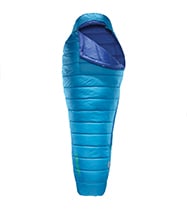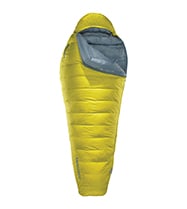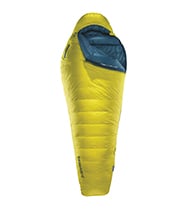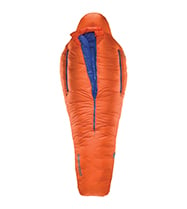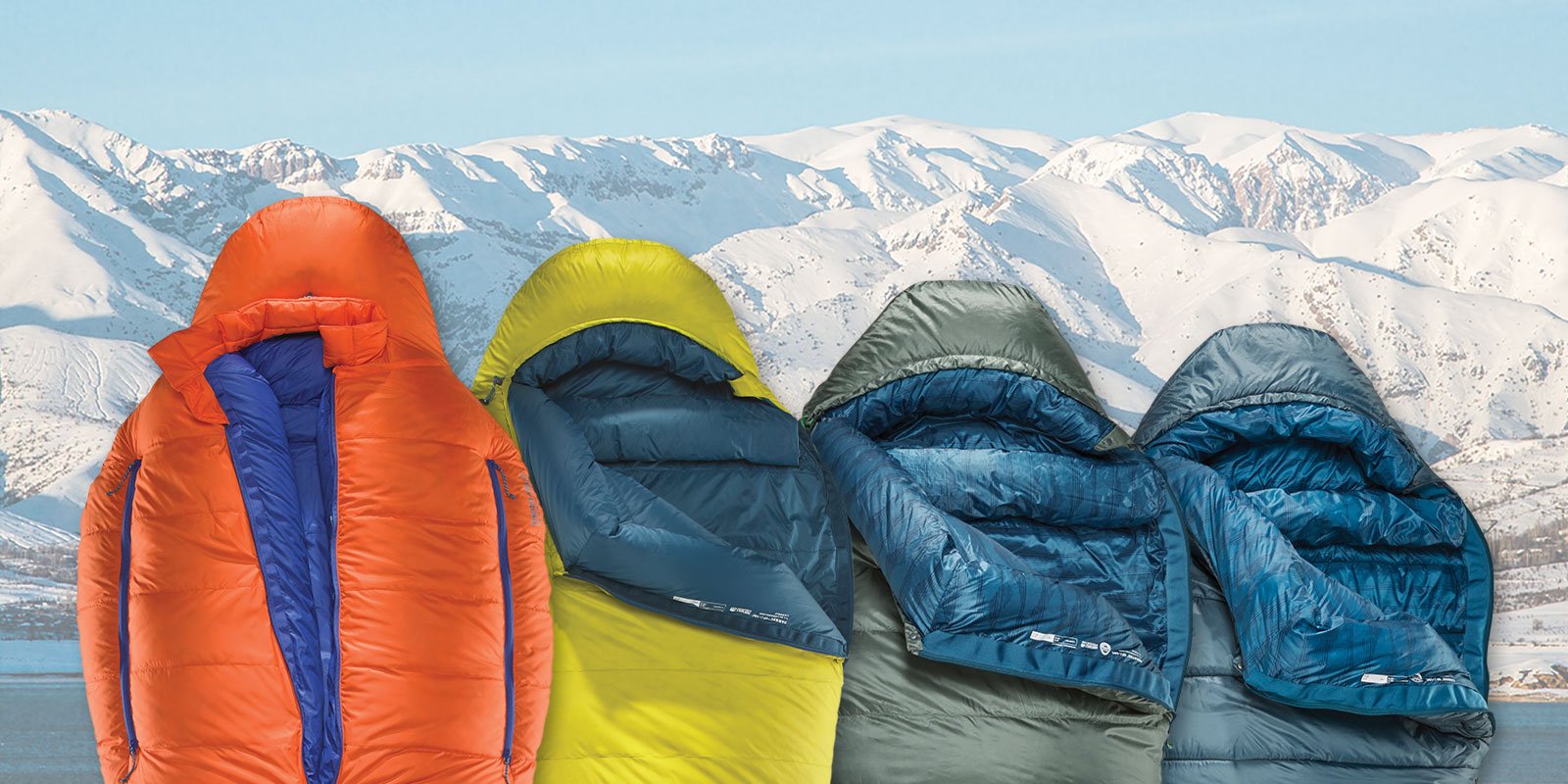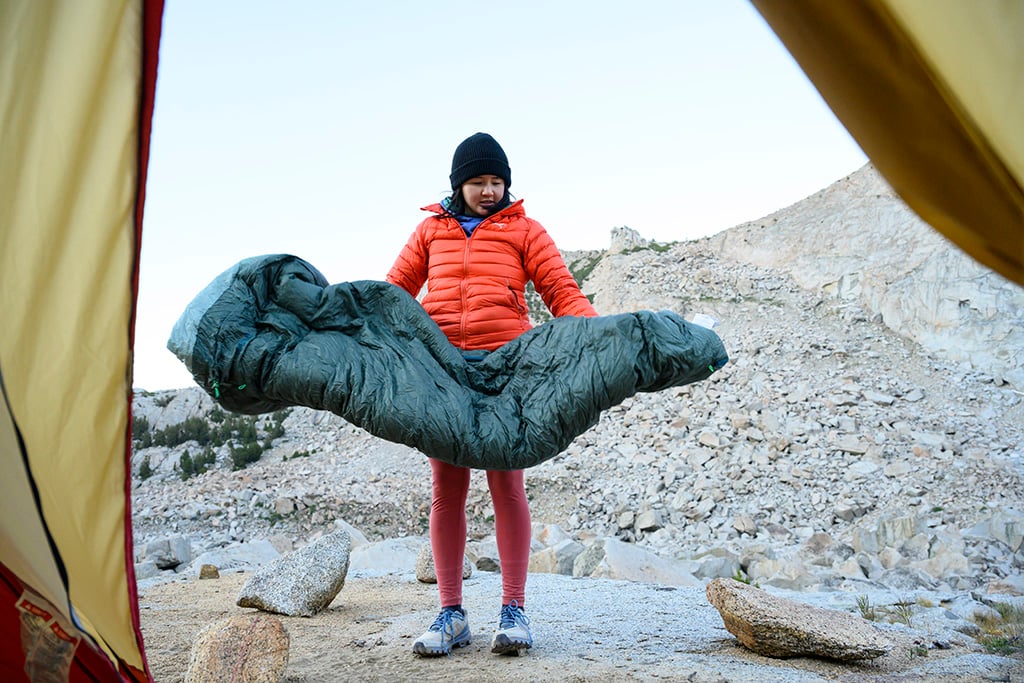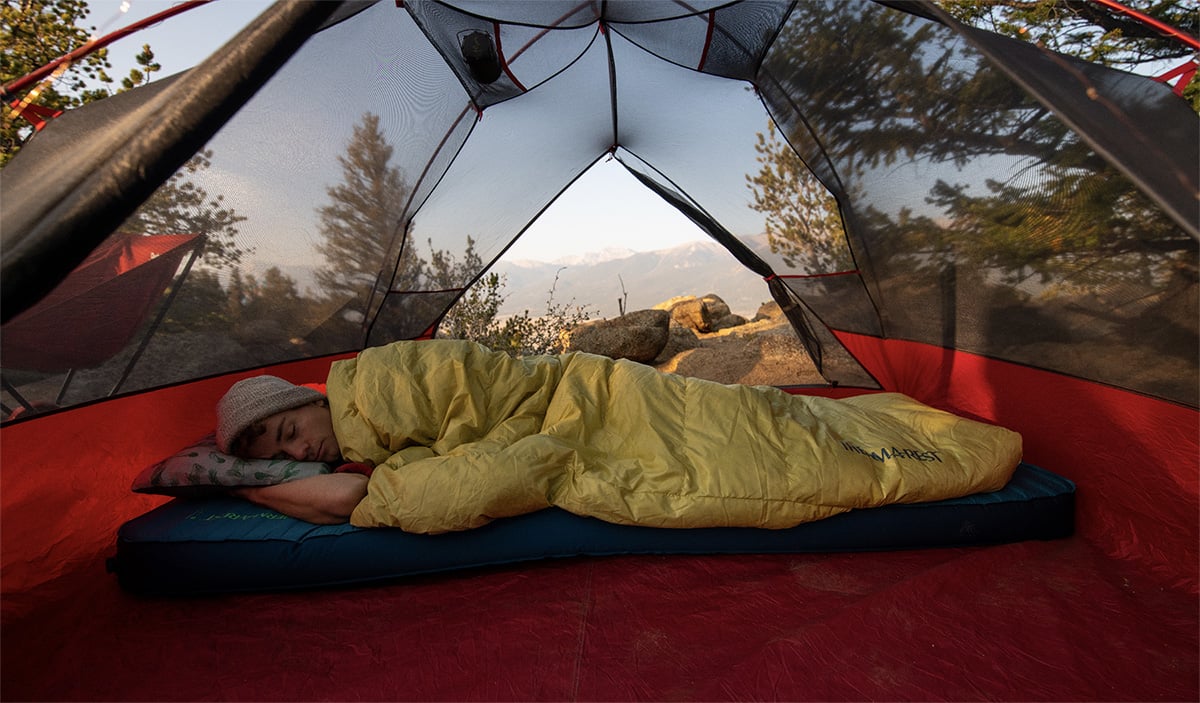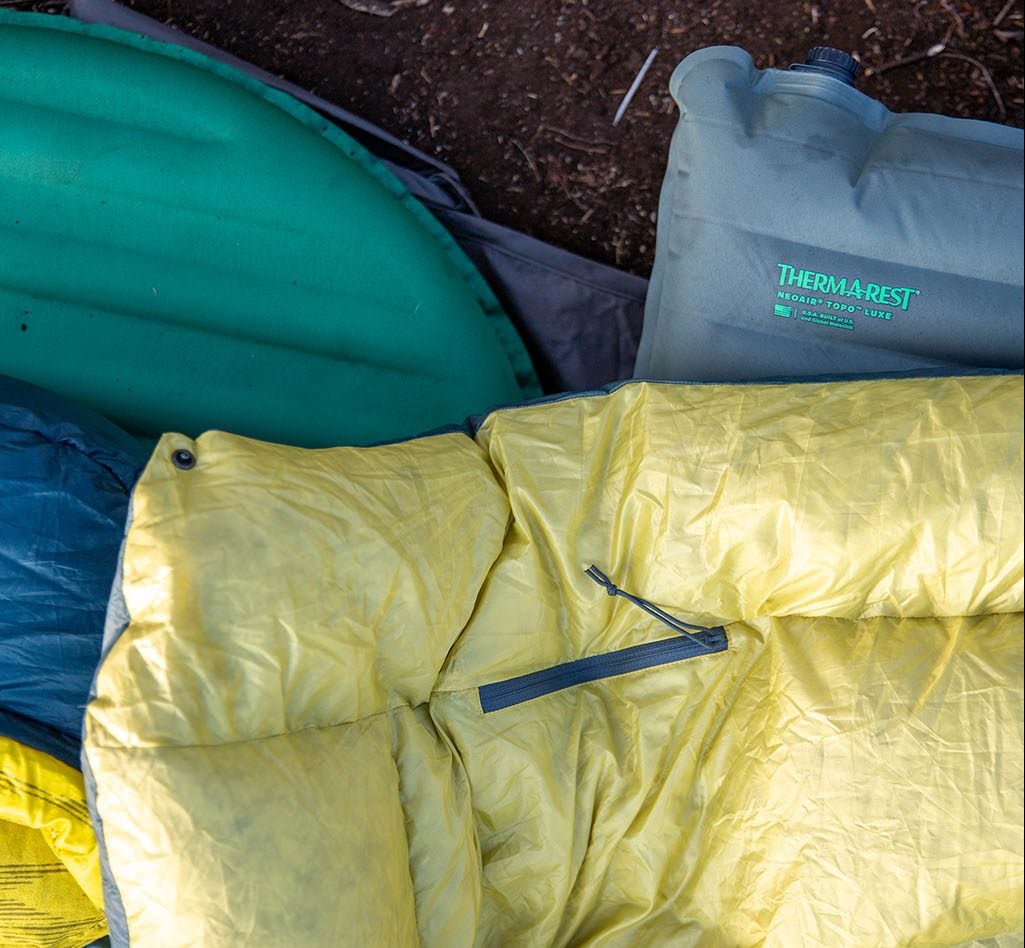At the beginning of 2022, we updated several of our sleeping bags to be made of 100% recycled ripstop nylon. The recycled textiles we use are Global Recycle Standard (GRS) certified. Of all the ways that we seek to be more sustainable with our business, successfully sourcing recycled ripstop nylon that meets our standards of quality and performance for our sleeping bag line is an important one.
Why so important? We deal in a lot of textiles, just ask our textile expert Katie Nash. From sleeping bags and quilts to sleeping pads and a damn cool poncho, textiles are foundational to our entire business. Beyond that, textiles are a central material in all our day-to-day lives. From the bedding we sleep in, to the clothes we wear, billions of humans partake in the textile supply chain every single day.
The textile supply chain is massive, and it is wasteful. It has a lion’s share of impact on climate change in terms of greenhouse gas emissions, but it also represents a realizable point of change. By closing the loop on the textile supply chain and transitioning to Global Recycle Standard certified materials, we can take a significant step in the right direction of mitigating climate change.
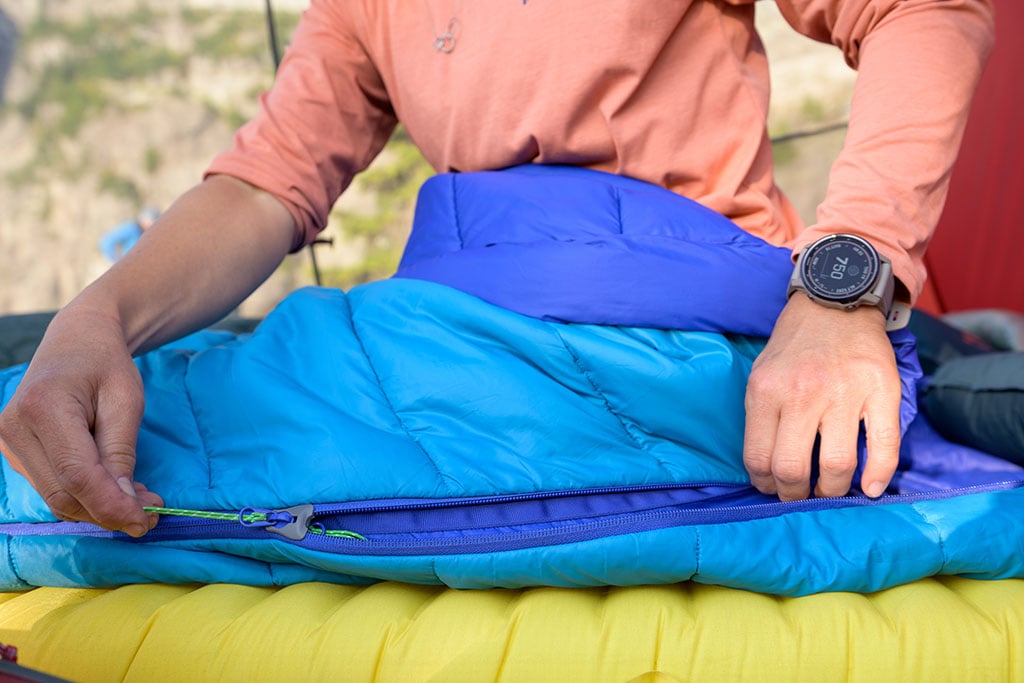
A Look at the Textile Supply Chain
In 2002, polyester overtook cotton as the world’s most used fiber, and as of 2020, it made up 52% of the fibers produced globally. Polyester, like the nylon we use for our sleeping bags, differs from cotton in that they are both synthetic fibers. While nylon and polyester both start from a chemical liquid that is then spun and dried into fibers, they are chemically distinct from each other. Both however were first produced by DuPont in the mid-20th century. And the very first step for producing either is extracting crude oil from the earth.
The current textile supply chain is arranged in a linear model. Over 97% of fibers that are produced begin as virgin feedstock. This means the input material at the outset of the production process, such as cotton or the petroleum-based compounds for synthetic fibers, have been extracted from the earth and are being used for the very first time to produce textiles. Meanwhile, in terms of clothing, 87% of the total fiber input used for clothing ends up in the landfill or incinerated at the end of its life. While we are dealing in sleeping bags, the clothing industry represents the most significant driver of demand for global textile production. Clothing data is critical.
This is what is meant by a linear model. Virgin materials are extracted from the earth, processed into clothes, the clothes are worn, they get washed (the synthetic ones can release more than 1,900 microplastic fibers per garment per wash), then tossed into the landfill. We go back and extract more virgin materials and start all over again. In terms of environmental impact, it is a deeply flawed system.
The textiles industry relies heavily on non-renewable resources—to the tune of 98 million tons per year—including oil for synthetic fibers, fertilizers to grow cotton, chemicals used in production, and dyes. Global cotton farming alone uses around 93 billion cubic meters of water annually. To top it all off, as of 2015, greenhouse gas emissions from global textile production totaled 1.2 billion tons of CO2 equivalent. That’s more than all international flights and maritime shipping combined.
That was in 2015, it’s now 2022. The industry has grown as demand for textiles has only increased. A trend that is not reversing and the potential impact it will have on climate change is magnanimous.

Climate Change and the 2°C Pathway
On December 12, 2015, 196 countries adopted what was called the Paris Agreement, a legally binding treaty on climate change. A key point of the agreement was to limit the global warming temperature to stay below 2°C warmer than pre-industrial levels. Climate change research has identified a 2°C rise in global temperatures above pre-industrial states as a critical threshold for the health of the globe. Really, the Paris Agreement set the goal of 1.5°C, with 2°C giving us some wiggle room we’d be advised not to take. The 2°C Pathway is all that goes into trying to mitigate climate change to stay below this threshold.
The effects of surpassing that 2°C threshold will be significant, and in many cases tragic. Here are some scenarios to consider:
Extreme Heat
U.N. report projected that 37% of the world’s population will be exposed to extreme heat waves once every five years should the global temperature surpass 2°C.
Biodiversity
With a 2°C increase, it is projected that 18% of insects, 16% of plants, and 8% of vertebrates are projected, by 2100, to lose more than half of their climatically determined geographic range.
Coral Reefs
With a 2°C increase, coral reefs are projected to decline by more than 99%. An irreversible loss in many marine and coastal ecosystems.
Truly the list goes on. The interconnected nature of our environment means that agriculture and livestock will be adversely affected, poverty will dramatically increase, sea levels will rise, etc.
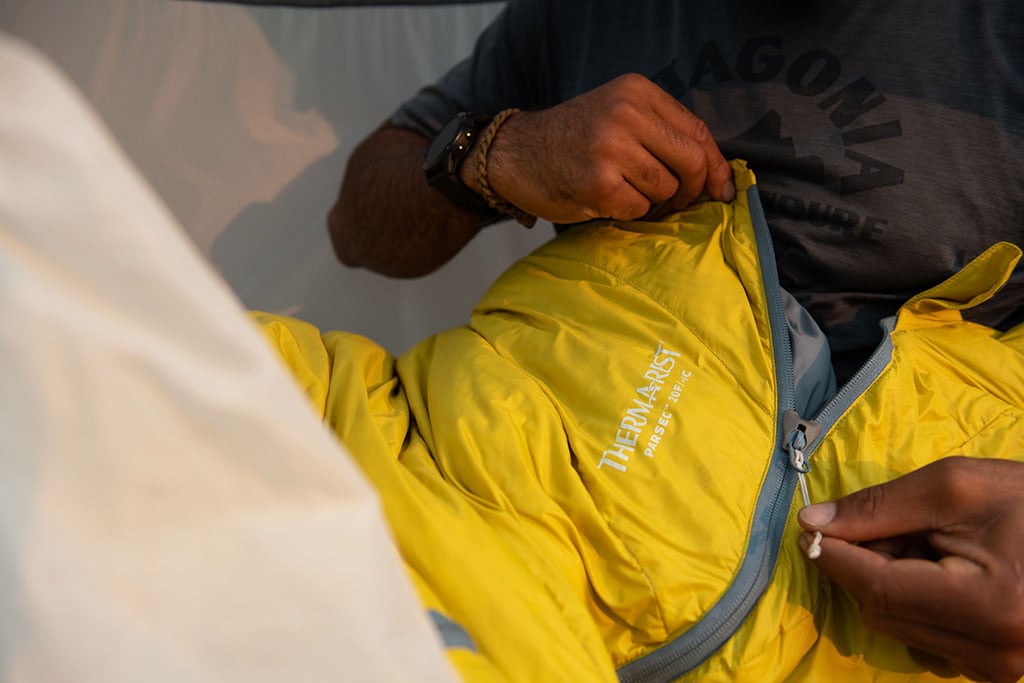
Why Are Recycled Textiles Important?
What does all this have to do with sleeping bags made of recycled nylon? Well, at its current growth rate the textile industry will account for more than 25% of the carbon budget for a 2°C pathway by 2050. That is an alarming number attributed to a single industry. However, it also represents a significant opportunity.
There are realizable improvements to every step along the textile supply chain to improve its environmental impact. And it starts with closing the loop. Fibers that have reached the end of their life, be they organic or synthetic, need to be repurposed into new textiles at a significantly higher clip.
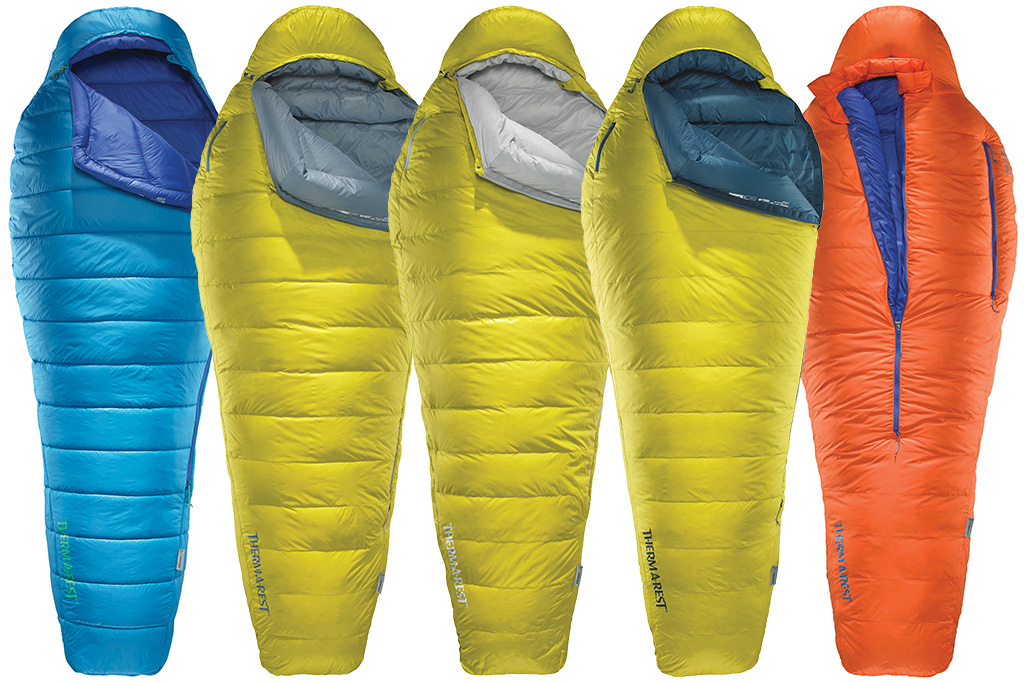
By choosing to make the Parsec 0F/-18C, the Parsec 20F/-6C, the Parsec 32F/0C, the Polar Ranger-20F/-30C and the Space Cowboy 45F/7C out of recycled nylon, we are closing the loop and driving a key change in the fight against climate change. Our direct impact may be small, but it takes commitments from manufacturers and individuals alike to combine and conquer.
By opting for recycled textiles, we prevent the waste of fabrics in landfills, we diminish the extraction of crude oil and water usage needed for virgin fibers and we reduce the overall carbon footprint associated with our textiles.

Why is the Global Recycle Standard Important?
Currently, there is no legal framework, mandate or governing body that compels companies to use or transition to recycled textiles—it is completely voluntary. This means that transparency along the supply chain is limited. A company that transitions to recycled textiles is presented with several obfuscations along the supply chain. How can they verify the final product is 100% recycled? How can they verify that the laborers involved with the production of their textile were treated humanely? How can they know that harmful chemicals were not used in the production? Ultimately how can they know they are actually choosing the right course of action to mitigate climate change and be more sustainable? This is where the Global Recycle Standard comes in.
The key points of the Global Recycle Standard are:
- Verifying Recycled Material: materials are verified to meet the ISO definition of recycled. Both pre-consumer and post-consumer material is accepted.
- Responsible Production: GRS sites are required to meet strict social and environmental requirements. Chemicals with the potential for harm are not permitted to be used on GRS products.
- Chain of Custody: Certification ensures that the identity of the recycled material is maintained: from the recycler to the final product.
- Credible Certification: A professional, third-party certification body audits each stage in the supply chain.
- Confident Communication: Products that meet all requirements may be labeled with the RCS or GRS logo.
- Stakeholder Agreement: The GRS is managed with the input of recyclers, suppliers, brands and retailers from all parts of the globe.
Using GRS-certified ripstop nylon in our sleeping bag updates was a voluntary measure, but one we saw as essential to the update. Transparency of manufacturing is a core reason that we have always made our products in market. As we set about to source recycled nylon from overseas, we knew that we had to maintain our rigorous standards of transparency.
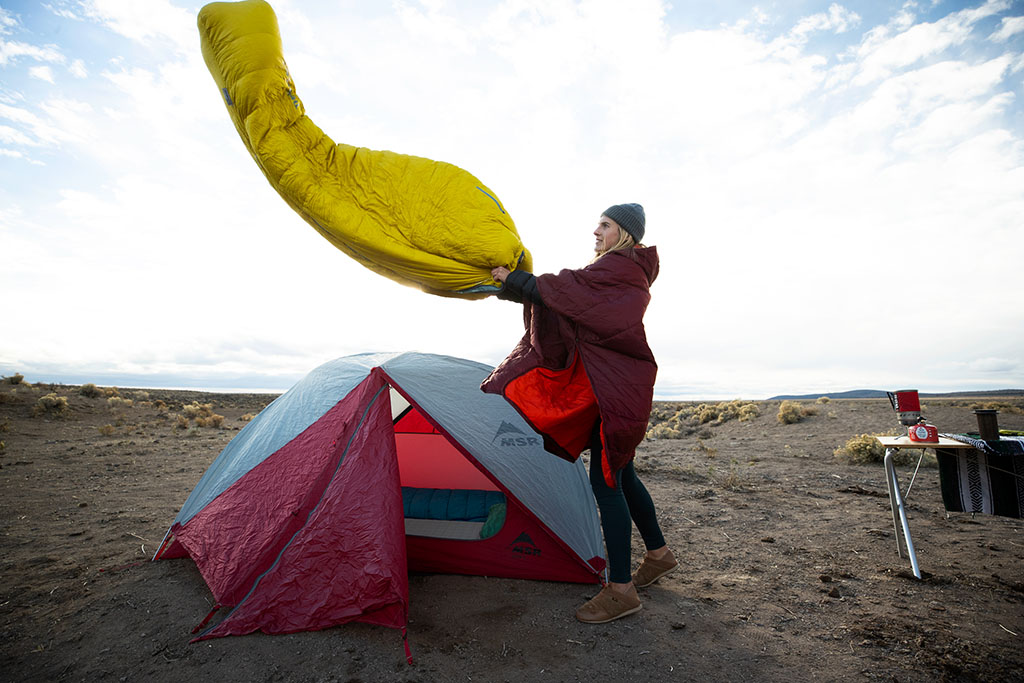
Our Commitment
We want our customers to be able to see and trust that we are committed to making a difference and becoming more sustainable. Our place in the textile supply chain is a major opportunity to achieve higher degrees of sustainability and do our part to manage our environmental impact. This is why we eagerly work with the Global Recycle Standard when it comes to sourcing recycled textiles for our products. Keep your eye out for the GRS logo on more and more Therm-a-Rest products in the coming years. But more importantly, keep your eye out for the logo on any product so you can choose recycled textiles and help drive the fight against climate change.
Related Posts:

